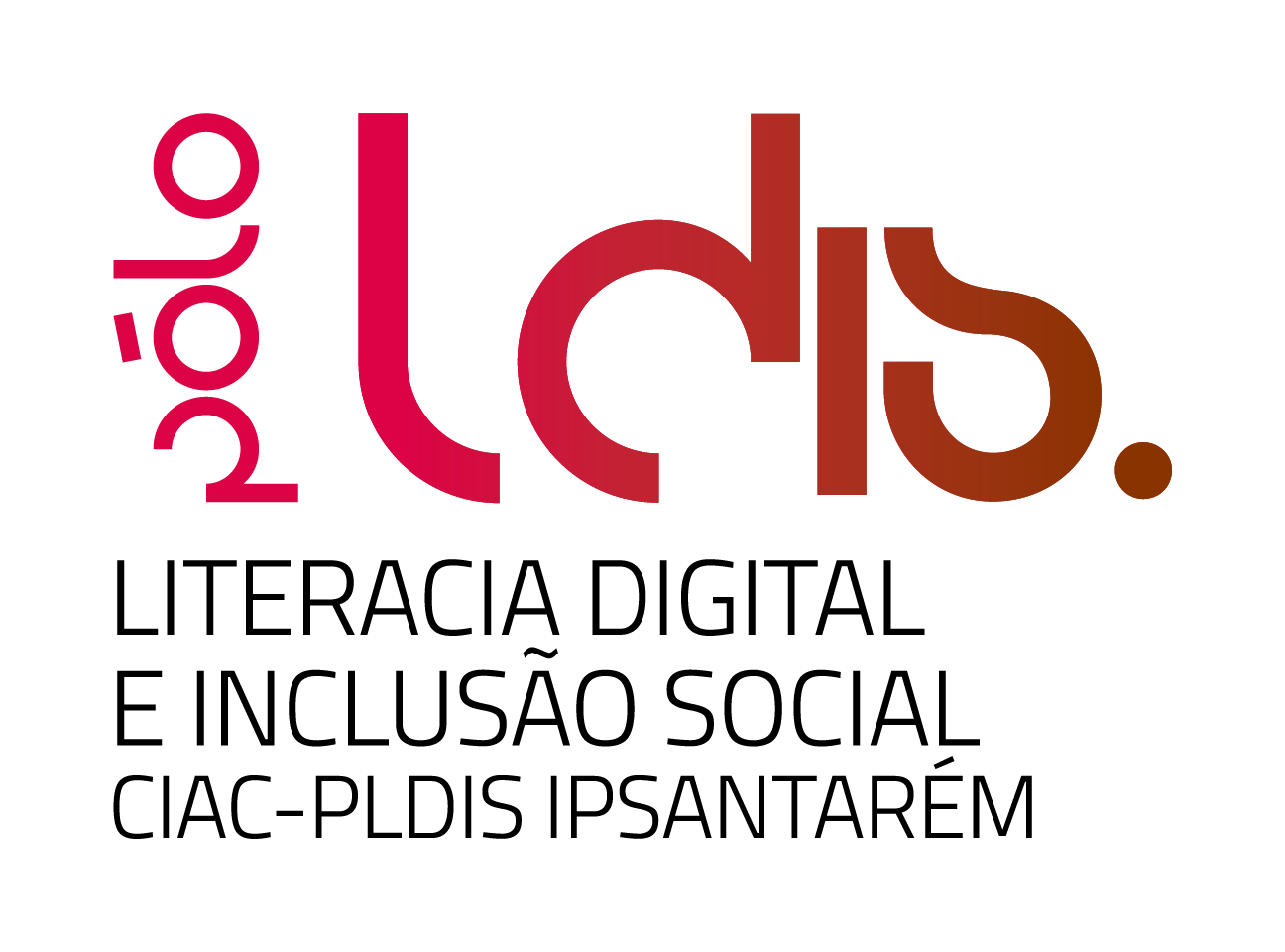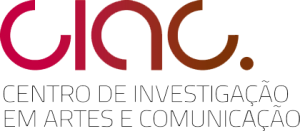PLDIS sets ambitious goals for the next five years, building on the foundations of the work already done. The main focus will be on:
O1 – Interdisciplinary integration of Digital Culture and Inclusion with the Digital Communication axis in a global ecosystem;
O2 – Strengthening the area of digital literacy and communication to generate new research environments that respond to national and international priorities, in line with the societal challenges of the labour market for all;
O3 – Strengthen the role of internationalization in all PLDIS activities, from research to innovation.
The consolidation and expansion of collaborative networks with institutions, with an emphasis on the international dimension of the networks (IberoAmerican_METARED and the Lusophone International Academic Network- RIAL), will significantly increase the social, educational, technological, impact and contributions to policy change. We believe that by strengthening internationalization and community engagement, PLDIS will achieve a more relevant global presence and contribute to local and global progress in the crucial areas of social inclusion, innovation in communication and digitization.
1.1 Promote research, including research, prototype development and POC in educational contexts, with a view to its application in the wider community, focusing on the SDGs in their different dimensions (such as development factor, gender equality, cultural heritage and inclusive cities, responsible consumption, active and fair participation in society, building sustainable partnerships, freedom of expression and respect for the environment).
1.2 Strengthen international partnerships with organizations and researchers experienced in the field of diversity and inclusion in different cultural, socio-economic and socio-educational contexts.
1.3 Understand and explore practices, behaviors, values and impacts related to the use of digital technologies in society.
1.4 To explore new forms of action related to the role of emerging technologies in digital culture, namely the Internet of Things (IoT), Distributed Ledger Technologies (DLT) and Artificial Intelligence (AI).
1.5 Strengthening the development of ongoing projects and the appropriate dissemination of their results.
1.6 Promote new oriented opportunities, including applications with partners and target communities to be involved at local, national and international levels, for the development of collaborative projects that address the role of digital culture in global inclusion issues.
1.7 Promote digital literacy as a determinant of inclusion.
2.1 Launch and promote an international training offer, supported by the Unit and CIAC, namely a PhD in Digital Communication in a Business Context. This program will be created in collaboration with the University of the Algarve (CIAC) and Universidade Aberta, in line with the SDGs, NUT-II and European Commission priorities, in a business context and with the added value of existing laboratory ecosystems (laboratory intensity) (Fab-Lab; Escape Room) and the DataColab to be created.
2.2 Consolidate and increase participation in national (such as FCCN; Incode2030; Portugal.Digital, among others) and international networks (such as METARED.ORG; RIAL; …) focused on research, development and innovation in literacy and communication, including different dimensions (virtual reality, artificial intelligence, advanced computing, data and cybersecurity).
2.3 Initiate pilot projects and POCs with national and foreign institutions, including innovative methods to promote literacy and
communication in its digital dimension in different sectors of society.
2.4 Initiate pilot projects for digitization and harmonization of data in the European area with national and foreign institutions.
2.5 Contribute to the development of demonstration projects for the sustainability of emerging technologies (such as the Internet of Things and big data analytics) with a view to digitizing traditional industries, increasing efficiency, productivity and competitiveness, and
promoting their ethical and responsible use.
2.6 Collaborate with the public, private and social sectors at national and international levels in various fields, with a focus on the PhD program in Digital Communication, to promote innovation in digital communication.
2.7 Integrate digitization in all phases of the research and development process, from data collection to dissemination of results, as well as in the internal processes.
2.8 Promote new models of cybersecurity and ensure secure digital environments in the activities.
2.9 Set concrete targets to measure the efficiency of the internal processes through digitization.
3.1 Design future strategies taking into account global dynamics, with a focus on identifying new opportunities for international
collaboration.
3.2 Promote participation in international research consortia and networks, encourage the participation of foreign researchers in PLDIS projects.
3.3 Define and monitor targets for increasing the number of co-authored scientific with foreign researchers.
3.4 Define and monitor targets for the increase and impact of the participation of foreign researchers in the development of projects, tests, prototypes and/or POC.
3.5 Define and monitor targets for increasing participation in international projects in terms of number, quality and funding.
3.6 Set and monitor targets for increasing the participation of the researchers in international research networks and consortia.
The strategy reflects an intersection between digital culture, inclusion, literacy, communication, and internationalization, with a focus on digital transformation and climate change. The following key steps are therefore part of this strategy:
4.1. Strengthen the global presence of PLDIS in the world of science and research in its fields.
4.2. Align the development of the unit and activities with the career development of each integrated member, with the integration of new researchers, with a view to sustainable career stabilization.
4.3. Organize international scientific conferences and events related to the ongoing activities and allowing the exchange of research results and experiences.
4.4. Increase the participation of each researcher in the unit in national and international scientific and/or academic events.
4.5. Promote the use of digital technologies to address the EU social and environmental challenges.
4.6. To disseminate widely the results of the projects and other activities carried out, not only to the main political and scientific actors, but also to interested communities and society in general.
4.7. Improve the quality of public communication on the Unit’s activities.
4.8. Promote the inclusion and integration of staff with advanced scientific backgrounds (PhDs, researchers, …) in the areas of activity for the non-academic labour market.
4.9. Define the barriers/limitations associated with each project and develop consequent mitigating
and develop consequent mitigation measures.
4.10. Define targets for monitoring the degree of compliance with the activity plan.
4.11. Define objectives for the career development of researchers who are members of the unit.
4.12. In each of the areas of intervention:
4.12.1. incorporating into new activities the best practices, recommendations and feedback obtained from the activities carried out,
thereby increasing the potential for knowledge generation in the field.
4.12.2. set and monitor targets for increasing the number and impact of scientific publications.
4.12.3. Set and monitor targets for assessing the quality and impact of communication at events and other dissemination activities.
4.12.4. Setting and monitoring targets for increasing the reach of those who benefit from the research and innovation processes.
4.12.5. Evaluate the level of satisfaction of the researchers, citizens and organizations involved (and incorporate this evaluation and its results into future initiatives).
4.12.6. Set targets for increasing the participation and impact of activities, organizing events and participating in international
missions.
4.12.7. Define concrete targets for monitoring the progress of projects and the level of compliance with planned activities, including
measures for possible mitigation plans (if applicable).
The following activity plan is structured according to the strategic action axes, including goals and objectives:
1. Conduct R&D on digital culture, literacy, and social inclusion topics (Axes 1, 2, and 3).
Outcome: At least 1 publication per year.
Members: Paulo Duarte Branco; Maria Potes Barbas; António Godinho; Filipe Cardoso; Artur Marques; Andreia Teles Vieira; Filipe Madeira; Adriano Cruz; Dário Rodrigues
2. Evaluate and recommend digital tools and platforms for communication and inclusion (Axis 2).
Outcome: 1 platform evaluated per year.
Members: Filipe Madeira;
3. Develop a doctoral training offer in digital literacy and inclusion (Axis 2).
Outcome: 1 course proposal submitted by year 2.
Members: Maria Potes Barbas; Paulo Duarte Branco; Andreia Teles Vieira; Filipe Madeira Ana da Silva; Susana Colaço; Isabel Piscalho
4. Expand research partnerships and networks (Axis 3).
Outcome: At least 1 new partner network every 2 years.
Members: Maria Potes Barbas: Susana Colaço; Isabel P; Marta Uva
5. Submit applications for European or national funding programs (Axes 1, 2, and 3).
Outcome: 2 applications submitted per year.
Members: Paulo Duarte Branco; Maria Potes Barbas; Andreia Teles Vieira; Elsa Casimiro; Filipe Madeira
6. Participate in European Commission initiatives and thematic conferences (Axes 1, 2, and 3).
Outcome: 1 participation per year.
Members: Maria Potes Barbas; Paulo Duarte Branco; Andreia Teles Vieira; Ana da Silva; Elsa Casimiro
7. Organize short courses, workshops, and webinars on digital inclusion and communication (Axes 1 and 2).
Outcome: 1 action per year.
Members: Paulo Duarte Branco; Andreia Teles Vieira; Rui Robalo; Adriana Silva; Ana da Silva; Dário Rodrigues
8. Develop digital content, podcasts, or practical guides for public dissemination (Axes 1 and 2).
Outcome: At least 2 materials created over 5 years.
Members: Maria Potes Barbas
9. Host collaborative hackathons or events for technological solution development (Axes 1 and 2).
Outcome: 1 event every 2 years.
Members: Paulo Duarte Branco; Andreia Teles Vieira
10. Conduct qualitative studies on the impacts of digital technology on social groups (Axis 1).
Outcome: 1 study published every 2 years.
Members: Maria Potes Barbas; Filipe Madeira
11. Publish thematic reports on digital technology practices and values (Axis 1).
Outcome: 1 report published every 3 years.
Members: Filipe Madeira
12. Create educational campaigns on emerging technologies like AI and IoT (Axis 1).
Outcome: 1 campaign developed every 3 years.
Members: Filipe Madeira; Filipe Cardoso
13. Provide best practices and guidelines for integrating cybersecurity in digital projects (Axis 2).
Outcome: 1 guideline document published every 3 years.
Members: Filipe Madeira; Filipe Cardoso; Cristina Novo
14. Maintain and improve the Hub’s web platform and social media dissemination (Axes 1, 2, and 3).
Outcome: Publish all results within 1 month and all activities on social media within 1 week.
Members: Filipe Madeira; Renata Pintor
15. Join post-doctoral and aggregation programs for all integrated members (Axes 1, 2, and 3).
Outcome: 1 program per member over 5 years.
Members: All
16. Involve partners from the RIAL, METARED, and COST action or other networks (Axes 1, 2, and 3).
Outcome: At least 1 partner in each programmed activity.
Members: Maria Potes Barbas; Filipe Madeira
17. Conduct annual evaluations of the program of activities and its impact (Axes 1, 2, and 3).
Outcome: 1 evaluation documented in a report annually.
Members: Filipe Madeira
18. Member researchers carry out missions (Axes 1, 2, and 3).
Outcome: 1 international mission and 1 national mission per member per year.
Members: Maria Potes Barbas
19. Organize annual meetings to review and adjust the Hub’s strategies (Axis 3).
Outcome: 1 meeting per year with documented minutes and recommendations.
Members: Maria Potes Barbas; Filipe Madeira


